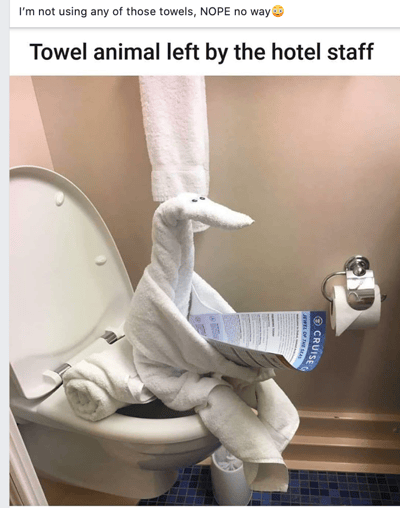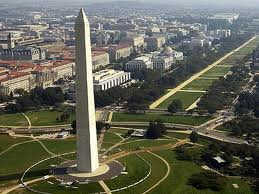 No sooner had I written a blog post last week about the attractiveness of CMBS loan rates right now, than I got a message for one of my subscribers informing me that conduits are no longer making hotel loans.
No sooner had I written a blog post last week about the attractiveness of CMBS loan rates right now, than I got a message for one of my subscribers informing me that conduits are no longer making hotel loans.
By the way, CMBS lenders are still making their large permanent loans on the Four Basic Food Groups - multifamily, office, retail, and industrial - at incredibly low interest rates today.

It makes sense why the conduits have stopped making hotel loans. Hotel occupancy rates are getting slammed right now by the Coronavirus Crisis.
Conduits make large, cookie-cutter, commercial real estate loans that are quickly aggregated into large pools and securitized into commercial mortgage-backed securities ("CMBS").
Conduits are not portfolio lenders. They can't just say, "Well, hotels are getting clobbered right now, but the world is not going to stop needing hotels. Since all of our commercial lending competitors are out of the hotel loan market right now, our bank will sneak in there and make a bunch of juicy loans on some of the very nicest hotels in the country."

Because conduits are not portfolio lenders, they can't hold commercial loans on their lines of credit for very long. They need to sell them off quickly. They can't hold these loans for two years, say, until the hotel market recovers.
Conduit is short for commercial real estate mortgage investment conduit, a specialized type of commercial mortgage company that originates loans for the CMBS market.
The thing that is special about conduits is that they get to sell their loans to a special kind of trust, called a pass-through trust, created by Congress, which does not have to pay taxes on its income from these commercial mortgages.

This special pass-through trust assembles a whole bunch (100 to 300) of these large, cookie-cutter, commercial loans into a pool. Then the trust sells pass-through securities, backed by the stream of payments and payoff's coming from the first mortgages in this pool. We call them pass-through securities because only the securities buyer (bond buyer) has to pay taxes on his interest income, not the pass-through trust.
Think of an old-fashioned C-corp. The C-corp pays taxes on its net income, and then the stock owners pay taxes on their dividends. C-Loans is a C-corp. Yikes. It's a form on double-taxation.
Congress created authorized commercial mortgage investment pass-through trusts to avoid this double-taxation. (They had created residential mortgage pass-through trusts a couple of decades earlier.) This move to avoid double-taxation created the commercial Real Estate Mortgage Investment Conduit industry ("REMIC") industry.

By the way, a portfolio lender is a lender that makes its loans using its own dough and intends to hold these loans for the entire term. A bank is an example of a portfolio lender. A family office is another example of a portfolio lender.
A commercial lender using a line of credit from a bank is not a portfolio lender because the bank that is providing the line of credit is probably going to reevaluate that credit facility annually. There is no guarantee that the bank will renew it.
Therefore, a commercial lender using a line of credit will need to sell off the commercial loans in his portfolio on a regular basis. He won't hold them until maturity.

Lastly, I have used the term, "large commercial loan", throughout his article. Conduits seldom make commercial loans of less than $5 million.
Some Thoughts on the Coronavirus Crisis:
You will recall that I made you uncomfortable (and probably bored) a few months ago when I described how the virus would soon become a pandemic and that it would cause another great recession, or possibly even a full-blown depression.
I just wanted to remind you that Chinese small business owners, who employ 60% of the Chinese workforce, have been traumatized. They are not going to want to take on additional debt.

The Chinese Communist Party can order the Chinese banks to lend, but it can't order small business owners to borrow. When banks can't find willing borrowers, yet they keep raking in monthly payments, the multiplier effect kicks into reverse. Any monthly payment that is not recycled into a new loan reduces the Chinese money supply by a factor of twenty.
In other words, if a Chinese bank takes in a $1,000 loan payment and doesn't immediately recycle it into a new loan, a whopping $20,000 gets sucked out of the Chinese money supply. In the parlance of economists, $20,000 is destroyed. During the Great Recession, about $4 trillion were destroyed.
The reason why this is important is because even if a cure, or even an effective treatment, for coronavirus is discovered today, the average Chinese small businessmen has already been traumatized. He is not going to be borrowing even more money from the bank.

China is facing a horrible deflationary vortex, where tight money leads to company failures, which leads to employee layoffs, which leaves fewer workers with money to buy products, which leads to less demand, which leads to more company failures and more layoffs. Its an ugly feed-forward cycle, a deflationary vortex.
If President Xi died and made me Emperor, I would put a moratorium on the loan payments on all bank consumer loans and bank business loans in the country. The Chinese Central Bank ("CCB") can easily replace the dough lost by the country's banks. After all, the dough is just digits in some computer.
Now if you hear the Chinese doing such a thing, there may be hope for us all; but absent that, prepare for a deflationary tidal wave coming out of China. Despite what you might think, we do NOT want China to fall into riots and chaos. They make the industrial parts and the medicines that our manufacturers need. They buy a poop-ton of our industrial and agricultural products. We should not wish them ill.




















 Conduit loans, also known as CMBS loans, enjoy a fixed rate for a whopping ten years. Unlike a fixed-rate commercial loan from a bank, there is no rate readjustment after five years. The rate is fixed for the entire ten years.
Conduit loans, also known as CMBS loans, enjoy a fixed rate for a whopping ten years. Unlike a fixed-rate commercial loan from a bank, there is no rate readjustment after five years. The rate is fixed for the entire ten years.







 When about $1 billion of new CMBS loans can be assembled, the loans are assigned to a trust. The trust then issues bonds (securities), backed by the commercial loans in the trust. These bonds are then sold by investment bankers, like Goldman Sachs or Morgan Stanley, to investors - like insurance companies, pension plans, and wealthy trusts. The banks and conduits, which originated the CMBS loans, get their money back, and the whole process starts all over.
When about $1 billion of new CMBS loans can be assembled, the loans are assigned to a trust. The trust then issues bonds (securities), backed by the commercial loans in the trust. These bonds are then sold by investment bankers, like Goldman Sachs or Morgan Stanley, to investors - like insurance companies, pension plans, and wealthy trusts. The banks and conduits, which originated the CMBS loans, get their money back, and the whole process starts all over. The Federal government is a huge employer, and government employment is growing.
The Federal government is a huge employer, and government employment is growing.  When the bubble popped, conduit lenders found that many of their loans were significantly upside down. The borrowers owed far more than the properties were worth.The lenders swore to never let this happen again. The CMBS industry therefore adopted a new financial ratio - the Debt Yield Ratio - to determine the maximum size of their commercial real estate loans.
When the bubble popped, conduit lenders found that many of their loans were significantly upside down. The borrowers owed far more than the properties were worth.The lenders swore to never let this happen again. The CMBS industry therefore adopted a new financial ratio - the Debt Yield Ratio - to determine the maximum size of their commercial real estate loans.
